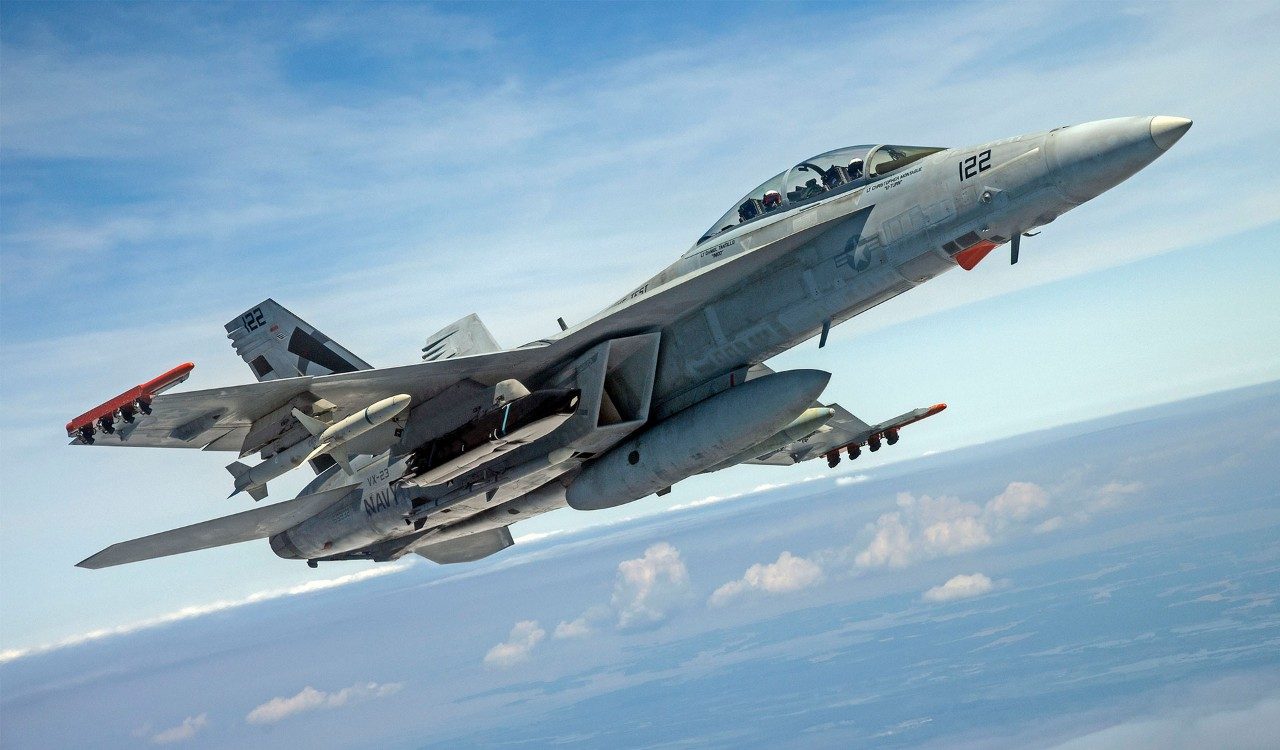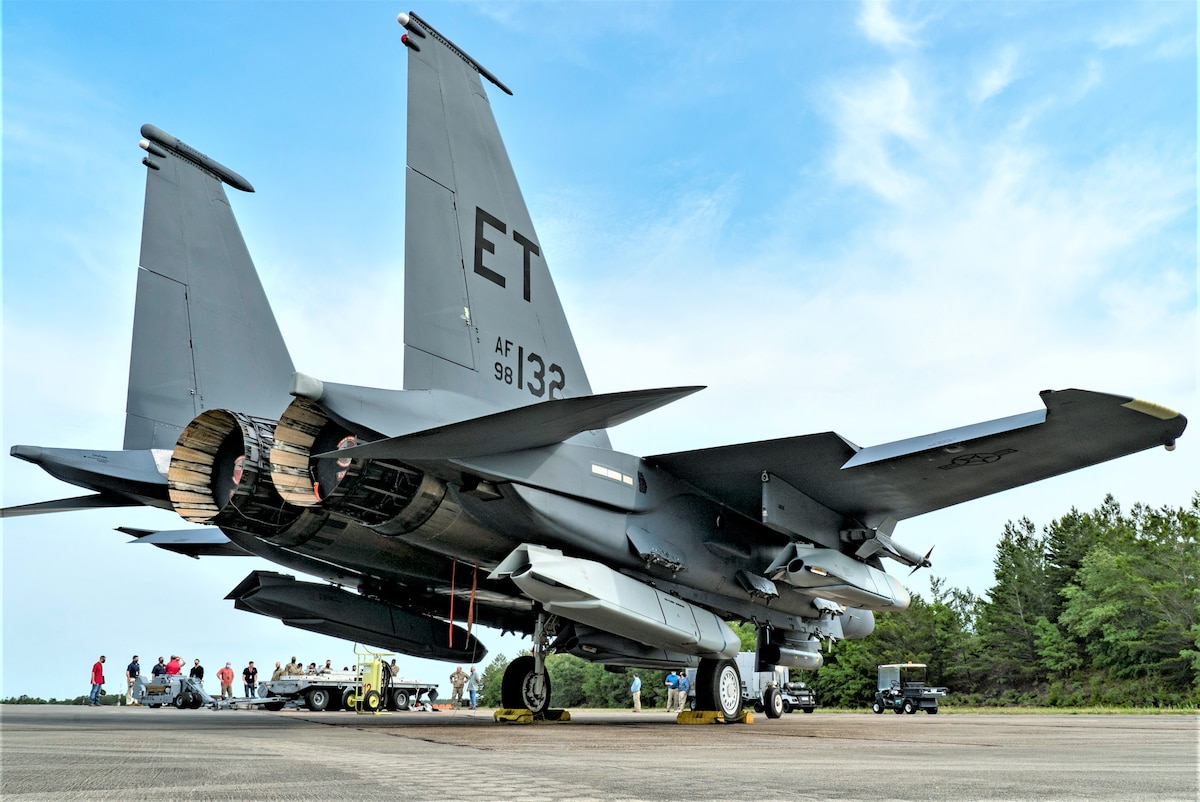The US Air Force’s F-15E and F-15EX fighter jets are set to be armed with a new powerful standoff strike capability as Lockheed Martin edges closer to securing a contract to integrate the stealthy AGM-158C Long Range Anti-Ship Missile (LRASM) onto these aircraft.
The AGM-158C is a stealthy, precision-guided, air-launched cruise missile designed to provide the US military with advanced strike options in the maritime domain.
The LRASM has a minimum range of 200 nautical miles, but its extended-range variant, the AGM-158C-3, can cover approximately 600 miles, nearly doubling its range.
The missile can currently be launched from just two platforms: the Navy F/A-18E/F Super Hornets and Air Force B-1 bombers. However, efforts to integrate this missile into the F-35 fifth-generation fighter jet and the Navy’s P-8 Poseidon aircraft are also in progress.
In September, the US military released photos for the first time showcasing a fifth-generation F-35C fighter jet armed with a stealthy, long-range anti-ship missile.
Now, the potential inclusion of the stealthy long-range anti-ship missile in the arsenal of the F-15E and F-15EX highlights the growing demand for these capabilities, especially as China continues to expand its Navy.

On January 8, the US Navy’s Naval Air Systems Command (NAVAIR) announced that it plans to negotiate an exclusive contract with Lockheed Martin, the lead contractor for the LRASM, to install the C-1 version of the missile on the F-15E and F-15EX fighter jets.
However, the Navy did not disclose the exact timeline for awarding this contract, and as a result, the timeline for integrating the AGM-158C-1 onto these fighter jets also remains unclear.
The F-15E and F-15EX fighter jets are well known for their impressive payload capacity, which allows them to carry substantial amounts of munitions. This capability would enable both jets to transport a large number of AGM-158C missiles and would greatly enhance their ability to target maritime threats.
In fact, in 2021, a US Air Force F-15E Strike Eagle was observed loaded up with five AGM-158 Joint Air-to-Surface Standoff Missiles (JASSMs).
Moreover, the Air Force’s Strike Eagles have long been a preferred platform for launching various AGM-158 Joint Air-to-Surface Standoff Missile (JASSM) family members, from which the LRASM was derived. The F-15EX has also demonstrated its ability to carry and employ JASSMs
That being said, the LRASM would provide a major upgrade by offering greater range and stealth for maritime operations.
F-15Es And EXs Armed With LRASM Set To Strengthen Pacific Operations
The ability to engage maritime targets effectively will be crucial if tensions between Washington and Beijing escalate. Stand-off weapons like the LRASM would allow U.S. aircraft to strike enemy warships from greater distances, minimizing their exposure to hostile air defenses.
Integrating LRASMs onto F-15Es and EXs would significantly boost the Air Force’s ability to target enemy naval assets, making them invaluable in a potential high-intensity conflict in the Pacific, particularly against China. These capabilities would give the US an edge in countering China’s expanding naval power.
The Chinese are keenly aware of this evolving threat. The EurAsian Times recently reported that Chinese scientists conducted a wargame simulating a US military barrage of stealthy LRASMs targeting a Chinese aircraft carrier strike group.
Beijing understands the critical need to assess US weapons like the LRASM to ensure its readiness for both defensive and offensive operations in the region.
The LRASM is not a completely new design but an advanced evolution of earlier missile technologies. Its roots can be traced back to the AGM-158A Joint Air-to-Surface Standoff Missile (JASSM), first deployed by the US Air Force in 2003. This evolutionary approach has allowed the LRASM to inherit proven capabilities.

The missile is specifically designed with survivability as a priority. The LRASM features a stealthy design and autonomous route-planning enabled by an onboard electronic support measures (ESM) suite. This allows the missile to reroute mid-flight if enemy defenses are detected and use radio-frequency emissions to locate and engage targets with precision.
In its terminal flight phase, the missile uses a passive imaging infrared sensor, which avoids detection by enemy radar and is immune to jamming while visually identifying and striking the most vulnerable parts of its target.
One of the LRASM’s defining abilities is its precision in targeting specific sections of a ship. For example, it can aim for critical components like an aircraft carrier’s island structure or specific sides of a vessel.
This precision becomes important in scenarios involving China’s aircraft carriers, where striking the starboard-side elevators could render their flight operations inoperable by halting the movement of aircraft between the hangar and flight deck.
- Contact the author at ashishmichel(at)gmail.com
- Follow EurAsian Times on Google News




